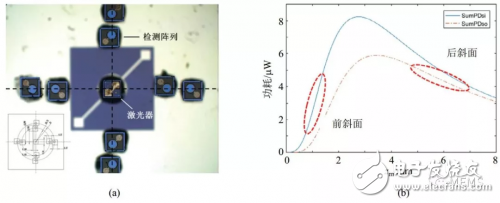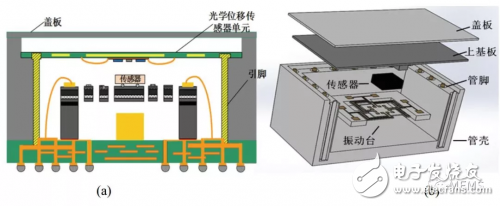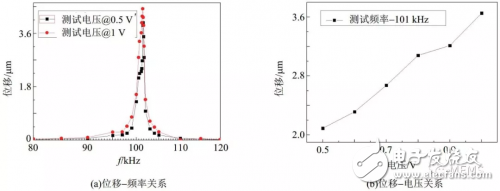Piezoelectric MEMS can realize micro-execution, energy harvesting, sensing and wireless communication through a single chip, and it is a hot technology with great application potential. Piezoelectric MEMS micro-actuators can accurately and autonomously perform complex actions such as straight lines, rotations, accelerations, clamping movements, etc., so as to complete nano-scale precise operations on extremely small devices and structures. Therefore, the piezoelectric MEMS microactuator can not only meet the stringent requirements of integrated micro system (IMS) for self-testability, micro-positioning and on-chip maneuverability, but also meet the output torque/volume efficiency ratio and response speed of the integrated micro system. , Resolution, power consumption, and integration requirements.
Beginning in 2015, with the task of integrated microsystems as the driving force, through problem positioning and technical decomposition, the research of MEMS microactuators based on PZT materials has been established. The current research progress includes the following aspects: Piezoelectric MEMS multi-degree-of-freedom micro Research on vibrating table technology, MEMS inertial sensor self-calibration technology, MEMS piezoelectric micro-motor technology and PZT materials and long-term stability of micro-actuators.
1 Piezoelectric MEMS multi-degree-of-freedom micro vibrating table technologyThe design difficulties of piezoelectric MEMS micro-actuators include the constraints between large displacement and low drive voltage, the constraints between the drive load power and the thinness of the actuator, and the performance degradation caused by inevitable process errors. In response to the above-mentioned difficulties in performance improvement, related technologies such as displacement amplification mechanism design, superposition modal decoupling design, load bandwidth optimization, etc. have been formed and developed in the process of continuous exploration. At the same time, based on multiple rounds of tape-out and design and layout mutual adjustment experience, complete the mathematical model of piezoelectric multi-degree-of-freedom micro-vibration table, establish the mapping relationship between process parameters and device performance, and combine device design optimization to realize the device The collaborative optimization of design and process preparation obtains stable process flow and excellent device performance of piezoelectric micro-actuators.
As shown in Figure 1, the manufactured multi-degree-of-freedom micro-vibrating table chip is at the international leading level in terms of displacement/voltage and actuator thickness. The progress of micro-actuators' thinness, low voltage, displacement and other indicators is of great significance for subsequent integration and applications. Index comparison is shown in Table 1.

Figure 1 (a) Micro-vibration table with different structures and (b) dynamic test results
Table 1 Performance parameters and comparison of micro vibrating table

MEMS inertial sensor self-calibration technology mainly realizes closed-loop control ability by integrating piezoelectric micro-vibration table and integrated array detection structure outside MEMS inertial sensor, which can provide multi-axis high-precision dynamic motion characteristics, so as to achieve in-situ no-in-situ before MEMS inertial sensor Self-loss calibration. By acquiring parameters such as the drift of the MEMS inertial sensor zero and the scale factor, the mutual coupling error of the non-sensitive axis, the acceleration sensitivity of the gyroscope and other parameters, the long-term drift error can be actively compensated before use, which can fundamentally reduce the long-term stability of the sensor The requirements of sex, greatly reduce its cost, and greatly expand the application field of MEMS inertial sensors. At the same time, this in-situ self-calibration technology is versatile, and can realize lossless in-situ self-calibration of MEMS inertial sensors of different types and structures, including accelerometers, gyroscopes, and IMUs.
Based on the progress of the multi-degree-of-freedom micro-vibration table, the self-calibration process verification of MEMS accelerometer and gyroscope has been completed. The optical threshold detection method is adopted to solve the problems of arrayed high-precision chip technology and the design and preparation of weak current detection circuit, which can realize the high-precision detection of multi-degree-of-freedom micro-vibration table array. The next step is to achieve 10 nm vibration displacement accuracy detection. . The optical detection sample and the variation of the detection volume with displacement are shown in Figure 2.

Figure 2 Optical threshold detection (a) arrayed structure sample and (b) the change of detection volume with displacement

Figure 3 Three-dimensional integration scheme of self-calibration module (a) cross-sectional view and (b) three-dimensional view
Figure 3 is the currently designed three-dimensional integration scheme of self-calibration module, which can realize the mechanical structure lamination and interconnection between the micro vibrating table, the detection structure, and the calibrated MEMS sensor, and the volume is less than 1 cubic centimeter. Figure 4 shows the completed integration samples and test conditions of accelerometer and micro-vibration table, which solves the integrated stress problem of mechanically sensitive structures, and is expected to achieve a self-calibration accuracy of less than 100 x 10^6, completely solving the long-term stability of a variety of MEMS inertial sensors Sexual issues.

Figure 4 Integration of accelerometer and micro-vibration table (a) preliminary integration sample, (b) packaged sample and (c) test result
3 MEMS piezoelectric micromotor technologyAs shown in Figure 5, the development of piezoelectric MEMS micro-actuators in terms of thinning and low voltage provides a new idea for the development of motors, which can integrate micro-actuators (motors), rotors, and rotors at the wafer level in an extremely flat integrated space. The state detection structure is expected to completely solve the problems of traditional ultrasonic motors' inherent large volume, poor assembly consistency, and inability to integrate with other structures in high density.

Figure 5 Microstructure of micromotor actuator
At present, existing international studies show that the planar integrated micromotor actuator still has problems such as low driving efficiency (Q value) and insufficient load driving capacity (displacement or output torque). In response to the above problems, novel design ideas are adopted, and new designs such as energy storage support structure design and special-shaped electrode structure are innovatively proposed. From the test results of the micro-motor actuator sample shown in Figure 6, it can be seen that the design method is practical and effective. The micro-motor actuator not only leads the world in terms of displacement/voltage and Q value, but also has excellent linearity and stability. Realizing the step-rotation drive to the load has great potential in terms of output torque, traveling wave drive efficiency, and integrated voltage. The specific parameter comparison is shown in Table 2.
At the same time, an integrated rotary stepping detection scheme is proposed, which is expected to further solve the requirements of extremely flat integration and high positioning accuracy, and realize the conformal integration of the detection structure with the micromotor microactuator and the rotor, and it is expected to achieve a rotation detection accuracy of ±0.2° .

Figure 6 Micro-motor actuator
Table 2 Performance parameters and comparison of micro-motor actuators

Long-term stability is an important operating index of micro-actuators. The long-term stability of MEMS micro-actuators based on PZT materials has not been reported in domestic literature. The main factors affecting the long-term stability of the micro-actuator are the design and PZT material characteristics. How to effectively use the PZT material characteristics and optimize the design method to improve the long-term stability of the micro-actuator requires continuous analysis and summary during multiple rounds of tape-out iterations. . Through the improvement of a series of design methods that match the material performance parameters such as interface control, component doping, preparation optimization, and polarization mode optimization, two aspects of the performance of piezoelectric materials have been optimized: first, the temperature stability is improved, and the The limitation of the process temperature has realized the improvement of the stability of the device performance; in addition, by adjusting the ferroelectric loop, the execution ability of the micro-actuator has been improved. The result is shown in Figure 7.

Figure 7 (a) Material temperature stability measurement and (b) Ferroelectric loop adjustment
The fatigue test results of the micro-actuator at this stage are shown in Fig. 8, and a stable working state with vibration times higher than 10^7 can be obtained. Research on the interface mechanism of the multi-material system is currently underway to explore the factors affecting the fatigue performance of the actuator, and lay the foundation for further improving the long-term stability of the micro-execution.

Figure 8 Fatigue test results of micro-actuators
Scientific significanceThis work is based on the design of piezoelectric MEMS micro-actuators, using fully integrated MEMS technology as a means to prepare MEMS micro-actuators with excellent performance, eliminating the driving energy dissipation, insufficient efficiency, and torque that may be caused by MEMS micro-actuators. Shortcomings such as not enough, fill the gap of the actuator solution of the integrated micro system. In China, the design and process bottleneck of the integration of PZT materials and MEMS technology has been broken, and the piezoelectric MEMS actuator module capabilities including "MEMS microactuator design and preparation, integrated closed-loop detection and control, and multi-structure integration" have been developed. Electric MEMS device design, preparation, test standardization, batch technology, lay the foundation for its application.
OutlookOn the basis of further improving the performance of MEMS micro-actuators, in-depth study of integrated closed-loop detection and control technology, multi-structure integration technology, inertial sensor in-situ self-calibration module and piezoelectric micro-motor module are realized. On the one hand, inertial sensor in-situ self-calibration module will bring about changes in the field of MEMS inertial sensors, breaking the traditional self-calibration mode and high-cost sensor chip optimization mode, and not only a replacement for traditional high-precision, high-stability, high-cost MEMS inertial sensors In addition, a series of new applications and changes have been developed, including the provision of new design freedom of inertial navigation systems, navigation and positioning, motion carrier control and other system architecture changes, which can reduce the maintenance cost of inertial sensors and even inertial navigation systems and extend the maintenance cycle. On the other hand, piezoelectric micro-motor technology has the advantages of low voltage, low power consumption, high integration, high precision, etc., and will be widely used in micro-motion control components, micro-mechanical assembly and maintenance, and nano-positioning.
Disel and gas power plant with high volatge diesel generators, Gas Generator, power plant management system
·Engine and alternator shall be mounted on a same frame steel skid.
·Comply with ISO8528 national standard and ISO9001 quality standard.
. Voltage: 3kV, 3.3kV, 6kV, 6.3kV, 6.6kV, 10kV, 10.5kV, 11kV,13.8kV
·World famous brand High Voltage AC alternator: Stamford, Leroy Somer, Marathon, Faraday, etc
·Advanced and reliable controller: Auto start, AMF & Remote control by PC with RS232/485
·Full range protect function and alarm shutdown feature.
Power Plant,Gas Power Plant,Diesel Power Plant,Lighting Tower
Guangdong Superwatt Power Equipment Co., Ltd , https://www.swtgenset.com
